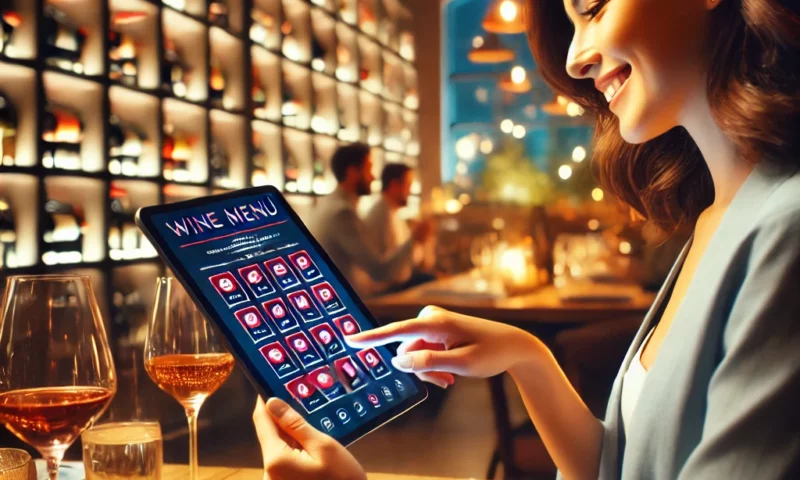
Today, the customer experience in restaurants is no longer limited to the quality of the dishes. The user experience has become paramount, and this is where a digital wine list can really make a difference. Gone are the outdated paper menus, and in comes technology that makes choosing wine easy, interactive, and above all, enjoyable!
But how can a digital wine list transform this experience? Let’s explore this together.
With a QR code wine list, your customers can access your selection of wines directly on their smartphones. A simple scan of the QR code placed on the table, and voilà, a detailed and visually appealing menu appears on the screen.
Example: Instead of waiting for a server to bring the wine list (and take time to explain the options), the customer can browse the menu at their own pace. Moreover, they can access details they wouldn’t have obtained otherwise, such as information about the grape variety, the estate, or food and wine pairing suggestions.
Another powerful feature of a tablet or QR code wine list is the integration of a virtual sommelier. This tool analyzes the customer’s preferences (personal tastes, chosen dish, budget) and suggests suitable wines.
Result: a more accurate recommendation, without the need for a sommelier to be present in the dining room.
Learn more about the importance of personalized recommendations in our article on the virtual sommelier.
One of the biggest advantages of creating a digital wine list is the ability to update it in real-time. Do you have a wine that is out of stock? Do you want to highlight a special promotion? All of this can be done in just a few clicks via a tablet wine list.
No more need to reprint menus; everything is dynamic! This also allows you to keep a menu that is always up to date, which is impossible with a paper menu.
Restaurants that adopt a digital wine list often see an increase in sales. Why? Because the menu becomes a discovery tool. With photos, detailed descriptions, and automatic suggestions, customers are more inclined to try new wines, even more expensive bottles.
Example: A customer hesitating between two wines may be convinced by a food and wine pairing suggestion or an attractive photo of the bottle.
With a digital wine list, you offer a more interactive experience. In just a few clicks, customers can sort wines by region, price, or grape variety. This makes the experience fun and engaging, while allowing customers to discover wines they might not have dared to choose with a traditional menu.
In summary, integrating a digital wine list in your restaurant, whether it’s in QR code or tablet form, significantly improves the customer experience. It’s a simple, effective, and modern way to make wine discovery more enjoyable and boost your sales.
Want to switch to a digital menu? Discover Winevizer and transform your customers' wine experience today!
Want to learn more? Check out other articles on the digitalization of wine lists on our News page.
Pendant 1 mois sans engagement